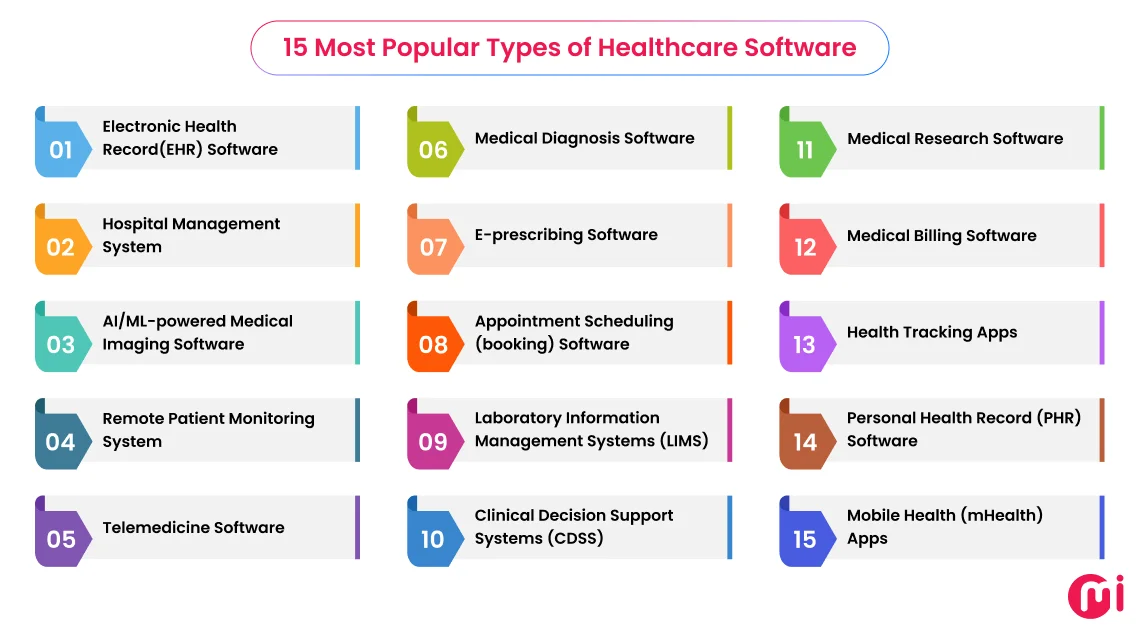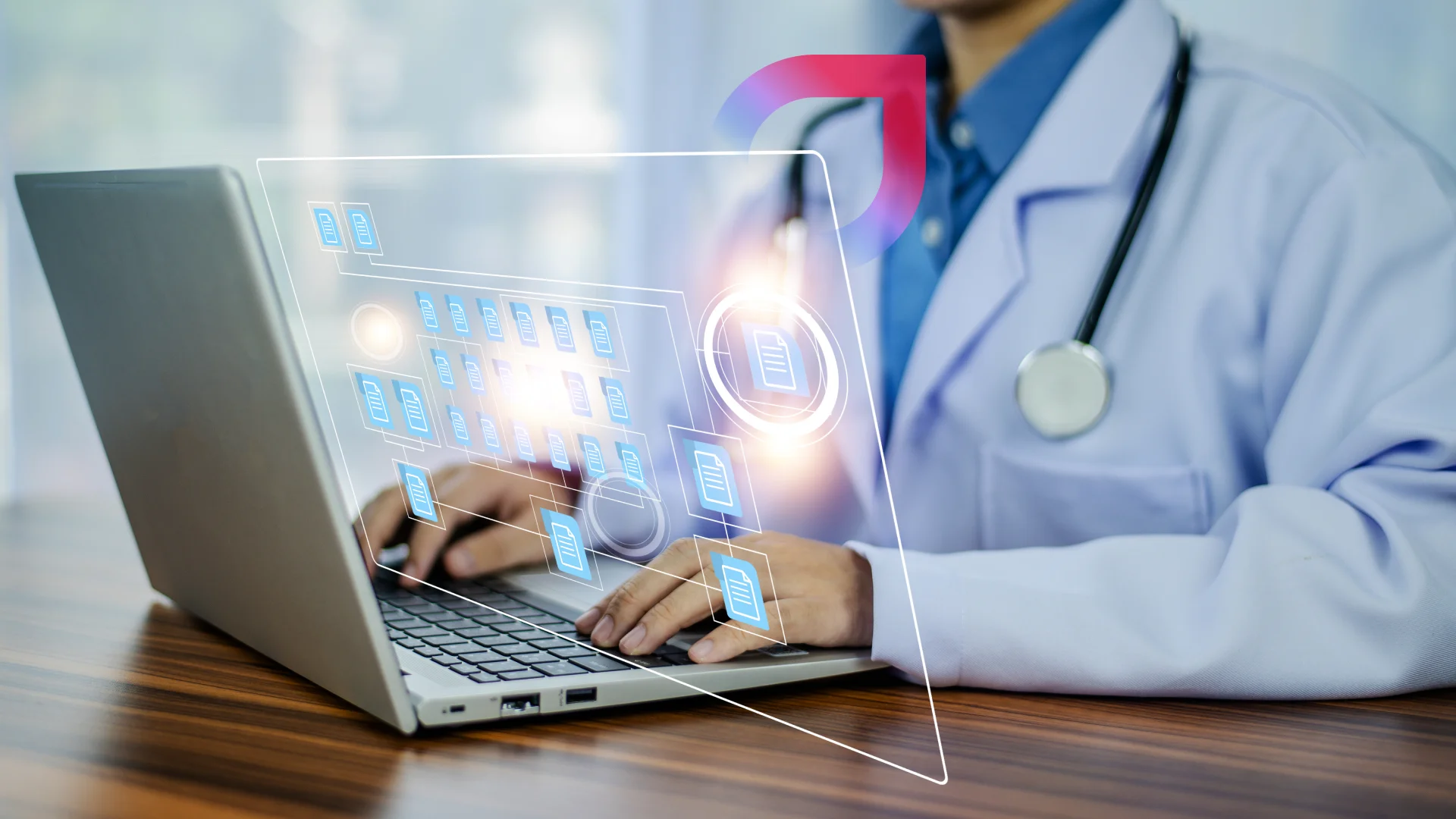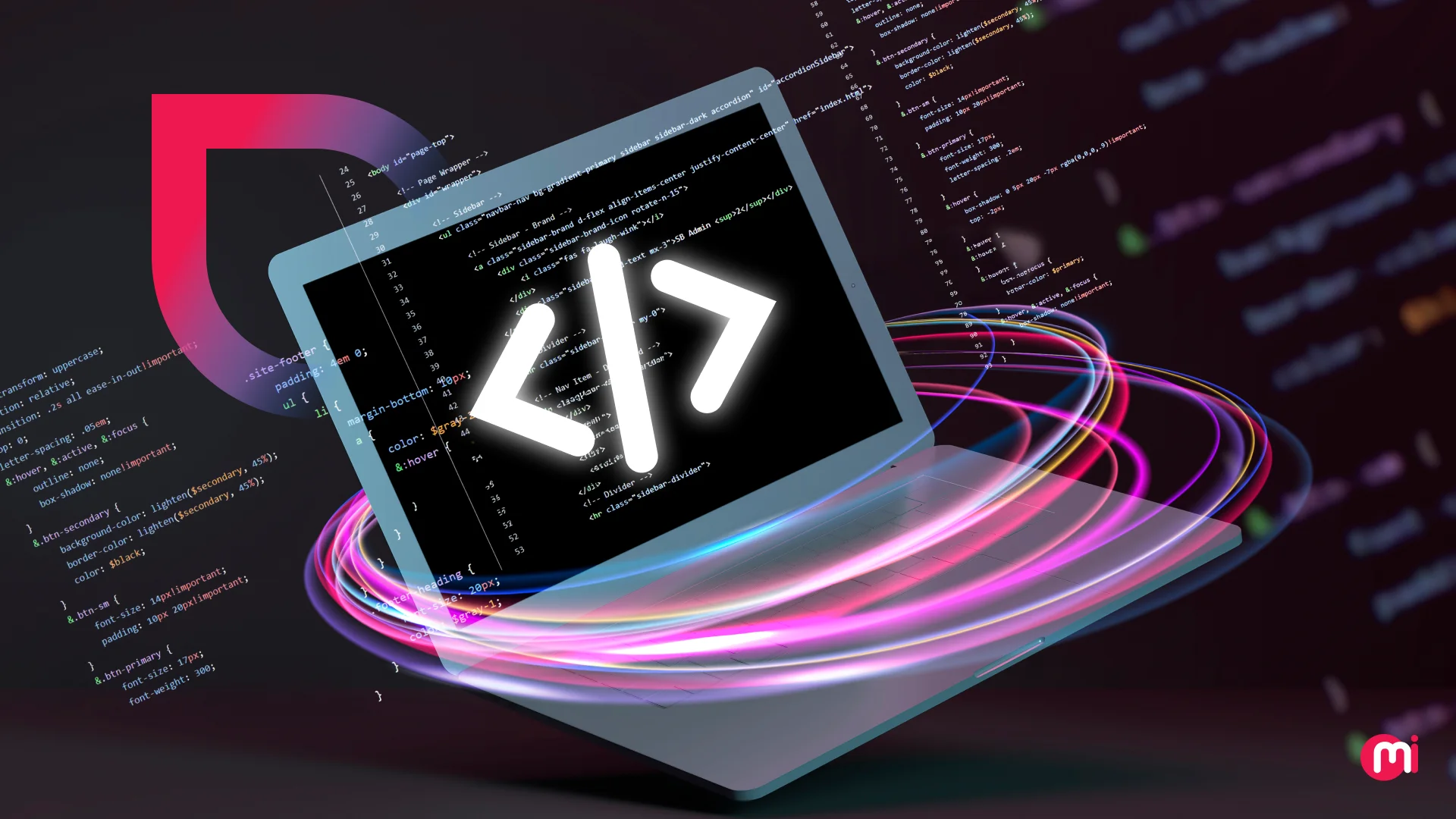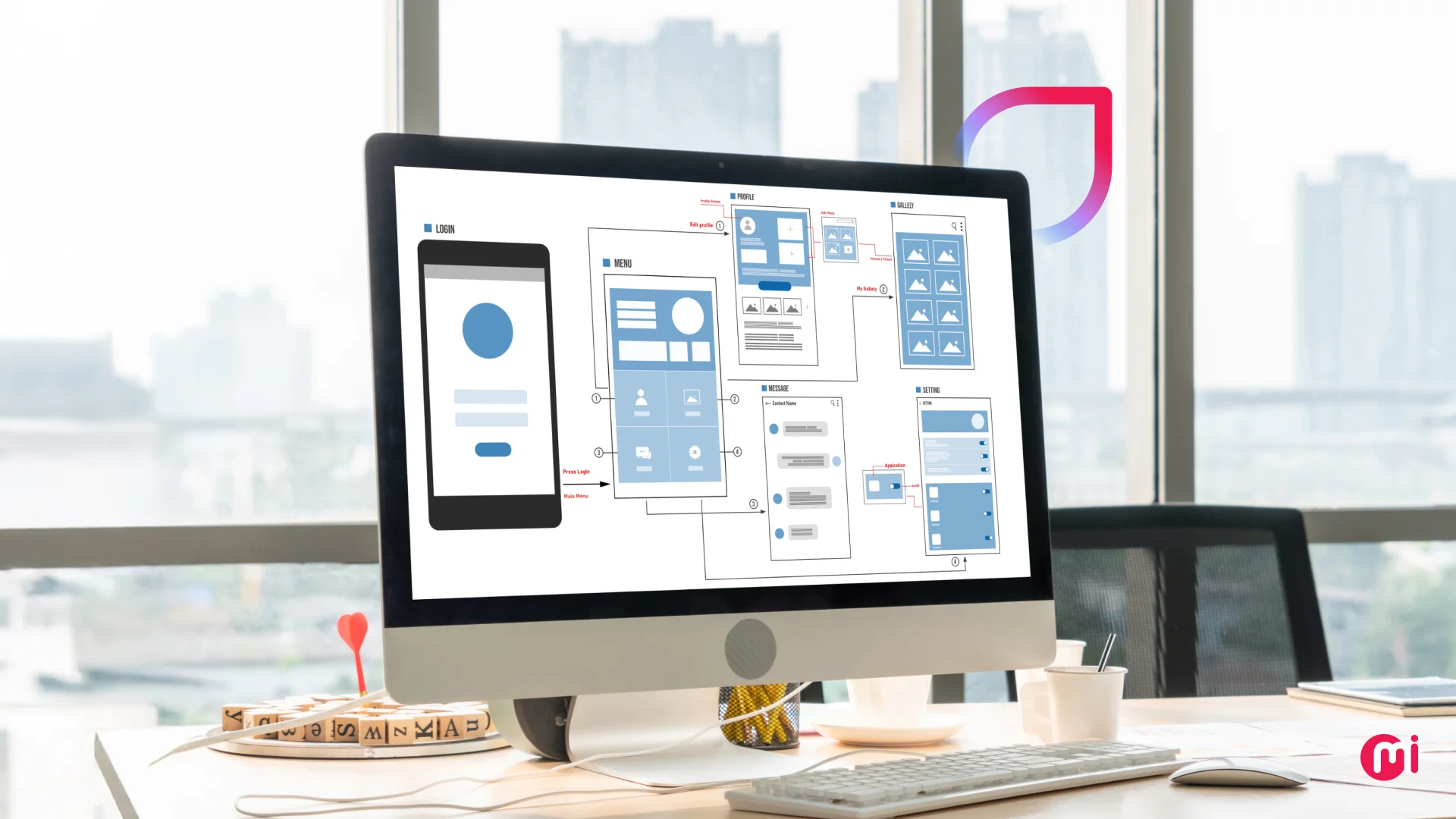Top 15 Types of Healthcare Software: Key Features and Benefits
- Software
- August 16, 2024
From electronic health records to hospital management systems, there are a wide variety of software used in hospitals and other healthcare organizations to meet diverse operational and patient care requirements. We have curated a list of the widely used types of healthcare software. Read this blog to explore these different types of healthcare information software, their key features, and the unique advantages they offer to various healthcare organizations.
We live in a world where video healthcare consultations are the new normal. Many of us have experienced the power of mobile devices in connecting us to doctors from around the globe, enabling top-tier healthcare consultations via video conferencing without the need to travel. This not only saves us millions of dollars in travel and accommodation expenses but also makes healthcare more accessible and convenient.
This is just one of many high-tech healthcare software examples that bridge the gap between patients and essential healthcare services. However, the benefits of high-tech healthcare software applications extend beyond just the patient experience.
There are various types of software used in hospitals, primary care practices, pharmacies, health insurance companies, laboratories, and more to meet various needs. Each type plays a crucial role in enhancing efficiency and care within the healthcare system.
Before we dive into the various types of software used in the healthcare industry, let’s first take a look at an overview of the healthcare software systems market.
Healthcare Software Market: An Overview
The healthcare software market encompasses a broad range of technologies designed to enhance patient care, streamline operations, and ensure regulatory compliance. Let us understand the current landscape of healthcare software systems.
- The global digital health market is projected to surpass $430.52 billion by 2028, reflecting increasing adoption of digital health technologies and rising demand for innovative solutions in the healthcare sector.
- By 2032, the global market for Electronic Health Records (EHRs) is projected to exceed $46.63 billion.
- The revenue for online doctor consultations is anticipated to grow by 26.10% from 2024 to 2033, reaching approximately $68.23 billion by the end of 2028.
- Forecasts suggest substantial growth in the global smart hospital market, with projections indicating it will expand from USD 42.8 billion in 2023 to nearly $209.7 billion by 2032.
- Valued at 28 billion in 2023, the hospital management system is projected to reach USD 59 billion by 2032 at a CAGR of 8.5% during this forecast period.
- With cloud enablement and pharmaceutical and biotechnology companies’ increasing expenditure in R&D, the global laboratory information management systems (LIMS) market is projected to show 12.5% CAGR and to be valued at USD 5.19 billion by 2030 from USD 2.88 billion valuation in 2025.
- Valued at approximately USD 2.05 billion in 2025, the global market for AI in medical imaging is anticipated to surge to USD 7.59 billion by 2030, reflecting a strong annual growth rate of 29.84% throughout the forecast period.
Now that we understand the growing adoption of technology and the need for digital solutions in the healthcare industry, let’s explore the different types of healthcare software in detail.
15 Most Popular Types of Healthcare Software

With numerous healthcare software applications available, it can be challenging to determine which types best suit the diverse needs of healthcare organizations. From electronic health records to telemedicine platforms, each software type used in hospitals offers unique features and benefits designed to address specific challenges and optimize healthcare delivery.
Here are some key healthcare software systems to consider for your requirements:
1. Electronic Health Record (EHR) Software
EHR systems make digital versions of patient medical history readily available to authorized users. This electronic patient record software stores real-time, up-to-date, patient-centered clinical, administrative, and other information, including medical history, allergies, past medical conditions, lab results, insurance information, and more.
The key features of Electronic Health Record (EHR) software are:
- E-prescribing
- Patient portal
- Medication management
- Appointment scheduling
- Immunization management
- Analytics and reporting
- Patient demographics management
These healthcare software systems offer a multitude of benefits. Here are some key benefits of EHR software:
- With complete information available, patient care is significantly enhanced.
- Streamlines processes, improves workflow, and reduces paperwork, leading to greater efficiency.
- Secure data storage ensures the protection of sensitive patient information.
- Simplified reporting and automatic tracking enable compliance with regulatory standards.
- Seamless sharing of information across different healthcare systems fosters better collaboration.
Some of the popular EHR software are Epic Systems, Cerner, Meditech, and more.
Now, if a healthcare organization seeks an internal system for managing patient information and medical records, it may consider Electronic Medical Record (EMR) systems instead of EHR. These systems are focused on documenting patient care within a single practice or facility and are intended for internal use only.
Unlike EHR systems, EMRs offer limited interoperability outside the organization.
Additionally, there is Electronic Patient Record (EPR) software, which is a subset of EHR systems, similar to EMR systems. EPR software includes capabilities for internal integration within the organization. In terms of integration, EPR systems offer internal interdepartmental integration and some degree of external data-sharing capabilities.
With recent updates mandating that healthcare systems be interoperable, we understand how critical it is for you to ensure your systems are compliant. Explore our blog on interoperability in healthcare to learn everything you need to know.
2. Hospital Management System
It is an integrated healthcare software system designed to streamline and manage various administrative, clinical, financial, and operational functions within a hospital or healthcare facility. It involves managing every aspect of a healthcare organization. These aspects combine to form the core features of this system.
Let us understand the key features of a comprehensive HMS to know what this system is all about:
- Patient Management: Patient registration, medical history, appointment management, etc.
- Financial Management: Billing, invoicing, insurance claim processing, revenue cycle management, etc.
- Inventory Management: Tracking and managing medical supplies and pharmaceuticals.
- Human Resource Management: Employee records, payroll, shift scheduling and management, etc.
- Laboratory, Radiology, and Pharmacy Management: Coordination of lab tests, radiology imaging, medication dispensing, and more.
- Operation Theater Management: Surgery scheduling, equipment tracking, anesthesia management, etc.
- Reporting and Analytics: Customizable reports and dashboards, performance metrics, financial reports, etc.
Here is how an HMS can impact different departments within a hospital:
- Finance Department: Benefits from improved revenue cycle management, accurate financial reporting, efficient cost management, and more.
- Administration Department: Leverages automated processes, reduces paperwork, and optimizes utilization of staff and equipment.
- Human Resources: Enhances employee management, effective shift scheduling, performance management, and more.
- Laboratory and Pharmacy Departments: Improves drug interaction checks, automates test ordering and result management, and increases the efficiency of supplies and medication management.
Some well-known Hospital Management Systems (HMS) used globally are Cerner Millennium, Epic Systems, Meditech Expanse, Allscripts Sunrise, NextGen, eHospital, and more.
Given the complexity of hospital management systems (HMS), it’s crucial to thoroughly understand all aspects before embarking on development. To assist you, we’ve created a comprehensive guide to develop a hospital management system. Explore our guide to gain insights into the challenges of operating without an HMS, the benefits of implementing one, essential modules, key features, and more.

3. AI/ML-powered Medical Imaging Software
Medical imaging software is used to analyze and interpret medical images such as X-rays, MRIs, CT scans, PET scans, ultrasounds, echocardiograms, and more. Unlike in the past, when medical images were analyzed manually, making the process time-consuming and prone to human errors, these software programs use advanced algorithms to analyze and interpret these images.
Leveraging AI ML development services is instrumental in detecting abnormalities, providing accurate diagnoses, facilitating early detection, reconstructing images, enhancing image quality, enabling 3D visualization, and more.
The key features of AI/ML-powered imaging software are:
- Predictive analysis
- Automated image analysis
- 3D Reconstruction and visualization
- Customizable AI models and algorithms
- Quantitative image analysis
- Workflow optimization and efficiency
From reduced errors to faster analysis, here are the key benefits of medical imaging software powered by the latest imaging technologies:
- Increases diagnostic accuracy by detecting abnormalities that radiologists might miss.
- Facilitates analysis of large volumes of images, empowering organizations to scale their operations easily.
- Allows timely interventions and better treatment of life-threatening diseases like cancer through early detection and identification.
- Helps analyze large datasets to identify trends and patterns for better prediction.
- Improves overall workflow efficiency and reduces operational costs.
- Enables physicians to create customized treatment plans based on the analysis of a patient’s medical history and imaging data.
Several popular healthcare software examples with AI/ML-powered medical imaging capabilities are IBM Watson, IDx-DR, Zebra Medical Vision, Arterys Cardio AI, Aidoc, and more.
AI/ML integration in various aspects of healthcare software is increasing; from diagnostics to patient engagement, artificial intelligence and machine learning are reshaping how care is delivered and decisions are made. Explore our in-depth blog on AI in Healthcare and discover how it’s powering the future of this life-saving
4. Remote Patient Monitoring System
With the shift toward offering patient-centered care, the size of the global remote monitoring market is increasing substantially, hinting at the adoption of these systems in the near future. According to Markets and Markets, this market in terms of revenue is expected to grow with a CAGR of 23.6% during the forecast period of 2023 to 2028, from $71.9 billion to $207.5 billion, respectively.
RMS is a boon of many sorts, especially for patients in rural or underserved areas. These systems eliminate the need for long-distance travel for these patients to access high-quality healthcare. These systems are designed to monitor, collect, transmit, and analyze patient health data remotely.
RPM technology leverages a wide range of devices, including blood pressure cuffs, glucometers, pulse oximeters, electrocardiography (ECG) devices, blood pressure monitors, and more.
Some key features of the remote patient monitoring system are:
- Real-time health data access and collection
- Automated alerts and notifications
- Patient data storage, transmission, and management
- Customizable monitoring parameters
- Seamless integration with EHR systems and telehealth platforms
- Customizable dashboards for healthcare providers
Here’s how your healthcare organization can benefit from implementing an RPM system:
- Ensures seamless data exchange across healthcare systems.
- Continuous monitoring of a patient’s vital signs and health metrics improves health outcomes.
- Automates the collection and transmission of health data, streamlining administrative tasks.
- Provides accurate and up-to-date information, facilitating personalized care plans and better decision-making.
- Increases patient base and geographic reach by offering services in remote and underserved areas.
5. Telemedicine Software
Telemedicine software is a digital platform that enables healthcare professionals and patients to conduct medical consultations and manage healthcare remotely, using technology to facilitate communication and provide medical services.
Telemedicine software has been one of the most appreciated digital solutions during healthcare crises, such as the COVID-19 pandemic. These platforms allowed patients to overcome the barriers of quarantine and lockdowns to access primary care, mental health services, and more.
This healthcare IT software typically includes a range of features designed to support various aspects of telemedicine, from virtual consultations to health management.
A robust telemedicine solution includes the following key features:
- Real-time video consultations
- Appointment scheduling
- Electronic Health Records (EHR) integration
- Prescription management
- Remote monitoring integration
- Billing and payment processing
- User management
- Analytics and reporting
Here’s how a telemedicine solution can benefit your healthcare business:
- Expands patient access to healthcare services, including those in remote areas
- Streamlines administrative processes, reducing the workload for staff and increasing efficiency
- Opens up new revenue streams through remote consultations, boosting overall profitability
- Attracts tech-savvy patients by offering modern and convenient healthcare options
- Encourages regular follow-ups and continuous care
- Differentiates your practice or healthcare organization in a competitive market
- Improves multidisciplinary care by facilitating easier coordination between healthcare providers
- Offers scalability to accommodate a growing patient base as your business expands
Known for their reliability, feature set, and adoption across healthcare organizations, some of the widely used telemedicine software are Teladoc Health, Amwell, Doxy.me, MDLive, DrCare247, and more.
This and many more such software, which are adopted by hospitals, play a huge role in their digital transformation journey. Learn more about why digital transformation is important in the healthcare industry.
6. Medical Diagnosis Software
Medical diagnosis software is a type of healthcare software that helps healthcare professionals identify diseases and medical conditions using patient data, symptoms, and test results. This software ranges from simple symptom checkers to advanced AI-driven platforms that analyze imaging, lab reports, and patient history to support clinical decision-making. Some AI-powered medical diagnosis software even features predictive analytics designed to assist with early disease detection, medicine personalization, risk stratification, and more.
They serve as digital assistants or copilots that reduce diagnostic uncertainty, speed up the evaluation process, and improve overall patient outcomes.
Some of the most critical features of medical diagnosis software include:
- Symptom analysis and diagnostic suggestions
- Integration with Electronic Health Records (EHR)
- Clinical decision support
- AI-powered diagnostics
- Medical imaging
The use of medical diagnosis software offers significant advantages for both healthcare providers and patients:
- Reduces diagnostic errors
- Speeds up clinical decisions and the diagnostic process
- Enhances diagnostic accuracy, especially for rare conditions
- Supports early detection
- Supports overburdened healthcare systems
- Improves resource utilization
7. E-prescribing Software
E-prescribing software allows healthcare providers to generate, send, and manage prescriptions electronically. It replaces handwritten prescriptions, reducing errors, enhancing medication safety, and streamlining the prescription workflow.
Key features of electronic prescribing software typically include:
- Patient record management
- Medication history access
- Allergy, interaction, or clinical alerts
- EHR integration
- Formulary and benefit checks
- medication refill management
E-prescribing software delivers multiple advantages across clinical and operational workflows:
- Reduces prescription errors
- Improves patient safety
- Improved accuracy and readability
- Increased efficiency
- Enhances patient adherence
- Supports compliance
- Reduced Time and Effort
Several popular e-prescribing healthcare software examples are SureScripts, Kareo Clinical, PracticeSuite, Tebra, and more.

8. Appointment Scheduling (booking) Software
Appointment scheduling software, often referred to as appointment booking or management software, enables healthcare providers to manage patient bookings digitally. It replaces traditional phone-based scheduling with an efficient, user-friendly interface, often integrating with calendars and other systems, allowing both patients and staff to book, reschedule, or cancel appointments online. Its main goal is to reduce administrative overhead and improve access to care through more organized scheduling.
The core features that help enhance both patient experience and clinic efficiency by automating and optimizing appointment workflows are:
- 24/7 online booking
- Automated reminders and confirmations
- Calendar integration and syncs
- Self-service rescheduling/cancellations
- Telehealth integration
- Reporting and analytics
- Mobile-friendly interface
- Queue position notifications
Implementing appointment scheduling software delivers significant advantages for healthcare practices and their patients:
- Streamlined operations and efficiency
- Reduces no-shows and cancellations
- Saves staff time by automating booking
- Improves patient satisfaction and retention
- Supports better patient flow
Trusted by clinics, hospitals, and telehealth providers, the appointment scheduling software are Calendesk, Acuity Scheduling, PracticeSuite, Square Appointments, SimplyBook.me, Reservio, and more.
9. Laboratory Information Management Systems (LIMS)
A Laboratory Information Management System (LIMS) is a healthcare software system used to manage and streamline laboratory operations or processes, including sample tracking, test results, workflows, and data reporting.
LIMS enhances efficiency, traceability, and regulatory compliance within clinical and diagnostic labs. Its most critical capabilities include:
- Sample tracking and lifecycle management
- Test workflow automation
- Data integration and equipment interfacing
- Quality control and audit trails
- Inventory and reagent management
- Instrument integration
- Reporting and analytics
LIMS provides significant value in clinical and research settings by improving both operational efficiency and data integrity. Here are more benefits that enhance laboratory performance and compliance:
- Increases accuracy and consistency
- Enhances regulatory compliance and quality control
- Accelerates turnaround times
- Improves data accessibility
- Improves collaboration and communication
- Supports scalability
Some of the popular LIMS used across hospitals, diagnostic labs, research centers, and pharma companies are LabWare LIMS, LabVantage, STARLIMS, Thermo Fisher SampleManager, and more.
10. Clinical Decision Support Systems (CDSS)
Clinical Decision Support Systems (CDSS) are software apps designed to assist healthcare providers and professionals in making informed, evidence-based clinical decisions. By analyzing patient data and applying medical knowledge, CDSS delivers real-time alerts, evidence-based recommendations, and insights that support diagnosis, treatment, alerts, and care planning.
CDSS functions as an intelligent layer within the clinical workflow, guiding providers toward safer, more effective care. Key features typically include:
- Knowledge management
- Real-time alerts and reminders
- Evidence-based treatment recommendations
- Diagnostic support
- Order sets and care pathways
- Integration with EHRs for patient data analysis
CDSS contributes to higher-quality care by enhancing the decision-making process. Here is how it benefits smarter clinical decisions:
- Reduces medical errors
- Improves patient safety
- Supports evidence-based medicine
- Increased adherence to clinical guidelines
- Increases efficiency
- Promotes consistency
Trusted and widely used examples of CDSS platforms are Epic Systems, Oracle Cerner, IBM Watson Health, Change Healthcare, and more.
11. Medical Research Software
Medical research software refers to a type of healthcare software designed to support the planning, execution, analysis, and management of medical and clinical research trials and studies. It streamlines data collection and management, improves research accuracy, and accelerates the path from hypothesis to discovery by enabling researchers to manage complex workflows and large datasets efficiently.
This software is built to handle the demanding needs of modern research environments, helping teams stay organized, compliant, and data-driven.
The common features of medical research software are:
- Data capture and management
- Study design and protocol management
- Statistical analysis and visualization
- Collaboration and version control
- Regulatory compliance support
Medical research software delivers critical advantages throughout the research lifecycle:
- Improves data accuracy, quality, and integrity
- Accelerates research timelines
- Enhances communication and collaboration
- Facilitates regulatory approval
The widely adopted Medical Research Software are Stata, R, IBM SPSS, REDCap, and more.
12. Medical Billing Software
Medical Billing Software is a specialized system designed to streamline every aspect of billing and revenue cycle management processes, from patient registration to claims submission and payment collection. These healthcare software applications automate billing processes to ensure accuracy and efficiency in the financial operations of any healthcare organization.
Here are some essential features that Medical Billing Software have:
- Patient Registration and Management
- Billing and invoicing
- Payment processing
- Insurance verification
- Insurance claims management
- Denied claims management
- Accounts receivable management
Here are the advantages you have of having a Medical Billing Software:
- Automates the billing process, reducing manual errors and speeding up claims submission
- Faster claims processing and reduced denials lead to quicker reimbursements
- Identifies and corrects errors before claims are submitted
- Keeps the organization compliant with healthcare regulations and standards
- Provides comprehensive financial reports that help in tracking revenue, identifying trends, and making informed business decisions
Some of the top medical billing software examples are AdvanceMD, DrChrono, RXNT, Kareo Billing, NextGen Office, ChartLogic, and more.
13. Health Tracking Apps
Essentially, health-tracking apps are designed to enable individuals to monitor and manage various aspects of their health and wellness.
From daily step counters to apps for monitoring calorie intake, analyzing sleep patterns, tracking menstrual cycles, and providing medication reminders, these are some of the simplest examples of health-tracking apps that users use for various aspects of life.
These apps represent considerable healthcare app ideas that startups can consider if they want to capitalize on the numerous business opportunities available in the healthcare industry.
Here are some essential features of health-tracking apps that can significantly enhance healthcare management:
- Health metrics tracking
- Goal setting and progress tracking
- Medication management
- Physical activity monitoring
- Symptom tracking
- Personal health records
- Integration with wearables and IoT devices
Here’s how health tracking apps offer several benefits to your healthcare business:
- Provide patients with control over their health data
- Offer valuable data and analytics that can be used to tailor treatments
- Enable the remote monitoring of patient health metrics
- Create additional revenue opportunities through subscription-based models or premium features
- Automate data collection and reporting, allowing healthcare staff to focus on more critical tasks
Used by consumers to monitor fitness, nutrition, sleep, vitals, and overall wellness, some of the popular health tracking apps are GYMPAK, Apple Health, MyFitnessPal, Fitbit, Strava, and more.
14. Personal Health Record (PHR) Software
A PHR is a comprehensive, patient-managed document that includes an individual’s health information. With this type of healthcare software, patients can store, manage, and access their health data in a digital format. This information can include medical history, immunization records, lab results, treatments, procedures, emergency contacts, and more.
These systems can be integrated with health systems and can also be connected to EHR systems, which are maintained by healthcare providers.
Here are the key features of a PHR system:
- Patient Registration and Profile Management
- Medical Records Access
- Prescription management
- Medication Management
- Health Monitoring
- Personalized Health Insights
- Billing and Insurance Management
- Health Goals and Reminders
- Educational Resources
Here are the key benefits of adopting a PHR system:
- Provides patients with access to their health records
- Facilitates seamless information sharing among healthcare providers
- Automates the management of patient records, reducing administrative tasks
- Offers a convenient and transparent way for patients to manage their health information
Some of the popularly used PHR systems are Apple Health, WebMD’s Personal Health Record, Oracle Cerner’s HealtheLife, and more.
15. Mobile Health (mHealth) Apps
Given the emphasis on “mobile” in its name, these apps are designed for smartphones and tablets to offer added convenience to users while leveraging mobile technology to provide tech-savvy health-related services. The core functions of these mobile apps for healthcare can vary from simple health tracking to complex disease management tools. They have become a top choice for startups planning to enter the healthcare segment of the app stores.
As far as future business potential is concerned, the global mHealth apps market size was $33.17 billion in 2023 and is expected to grow at a rate of 11.7%, reaching $88.70 billion by 2028.
The mHealth app’s features are:
- Appointment scheduling
- Medication management
- Integration with EMR/EHR
- Medication reminders
- Health tracking and analytics
- E-prescriptions
- Personalized health insights
- Fitness and wellness tracking
The mHealth apps offer significant business advantages for healthcare organizations. Here are some key benefits:
- Provides convenient access to healthcare services through users’ mobile devices.
- Creates additional revenue streams through in-app purchases or partnerships with other healthcare providers.
- Reduces overhead costs associated with in-person visits and traditional office management.
- Reminds patients to take medications, attend appointments, and follow treatment plans.
Popular mHealth apps used for various purposes are Doctor on Demand, Talkspace, Fitbit, PocketRx, and more.
Key Takeaways on Software Used in Hospitals
Healthcare software has transformed the way hospitals operate, making patient care more efficient and effective than ever before. From Electronic Health Records (EHR) to cutting-edge AI-powered tools, these systems streamline everything, from managing patient information and scheduling appointments to aiding clinical decisions and supporting remote care.
The diversity of healthcare software reflects the complexity of hospital needs. Whether it’s a robust hospital management system for day-to-day operations or specialized software for medical imaging and billing, each plays a crucial role in enhancing outcomes and reducing errors.
As hospitals continue to adopt newer technologies, the focus remains on improving patient experience and care quality. Choosing the right healthcare software is essential, and it should align with the specific goals and resources of the healthcare facility.
In essence, healthcare software isn’t just technology; it’s the foundation for smarter, more connected, and patient-centric hospitals.
Partner with MindInventory to Develop Cutting-Edge Healthcare Software Solutions
In the rapidly evolving healthcare sector, staying ahead requires more than just cutting-edge technology; it demands specialized expertise and tailored healthcare software solutions.
At MindInventory, our dedicated development team for hire understands the unique challenges faced by healthcare businesses and is equipped to deliver innovative, secure, and compliant software solutions.
From integrating AI in healthcare solutions to developing custom software for healthcare, HIPAA-compliant software, ensuring interoperability, and more, we offer a comprehensive range of end-to-end custom software development services designed to meet diverse needs.
If you are searching for the right healthcare software solution for your business, contact our team to discuss your requirements and discover how we can assist you in providing a digital healthcare solution tailored to address those needs.
FAQs on Types of Healthcare Software
The most commonly used software in healthcare is electronic health record (EHR) software. Beyond EHRs, other common types of healthcare software include practice management systems, telemedicine platforms, medical billing software, clinical decision support tools, and more. Each plays a vital role in streamlining care, reducing administrative burden, and improving patient outcomes.
There isn’t a one-size-fits-all solution, but some of the best hospital management systems (HMS) stand out for their features, scalability, and ease of use. The “best” software depends on your hospital’s size, budget, and specific needs (like patient volume, specialty focus, or integration with existing systems). It’s also important to look for good support, data security, compliance (e.g., HIPAA), and user training.
The term “Health Management System (HMS) is often used as a general category, but there are many specific software products that fall under this umbrella. These systems help hospitals and clinics manage everything from patient records and appointments to billing, inventory, and reporting.
HMIS stands for Hospital Management Information System. It’s a comprehensive, integrated healthcare software system used to streamline the day-to-day operations of a hospital. Think of it as the digital backbone that connects departments, improves efficiency, and helps deliver better patient care. The goal of HMIS is to reduce paperwork, eliminate duplication, speed up processes, and provide real-time data to support better decision-making. It helps hospitals run more smoothly and ensures that both clinical and administrative tasks are handled efficiently.
Hospitals typically use Hospital Management Information Systems (HMIS) and Electronic Health Records (EHR) software. Apart from these critical software, hospitals also use medical billing software, e-prescribing software, medical imaging software, practice management systems, and more.
In hospitals, Management Information Systems (MIS) are used to collect, process, and analyze data to support decision-making and improve efficiency. They help manage the staff scheduling, patient records, appointments, finance management, and more.













